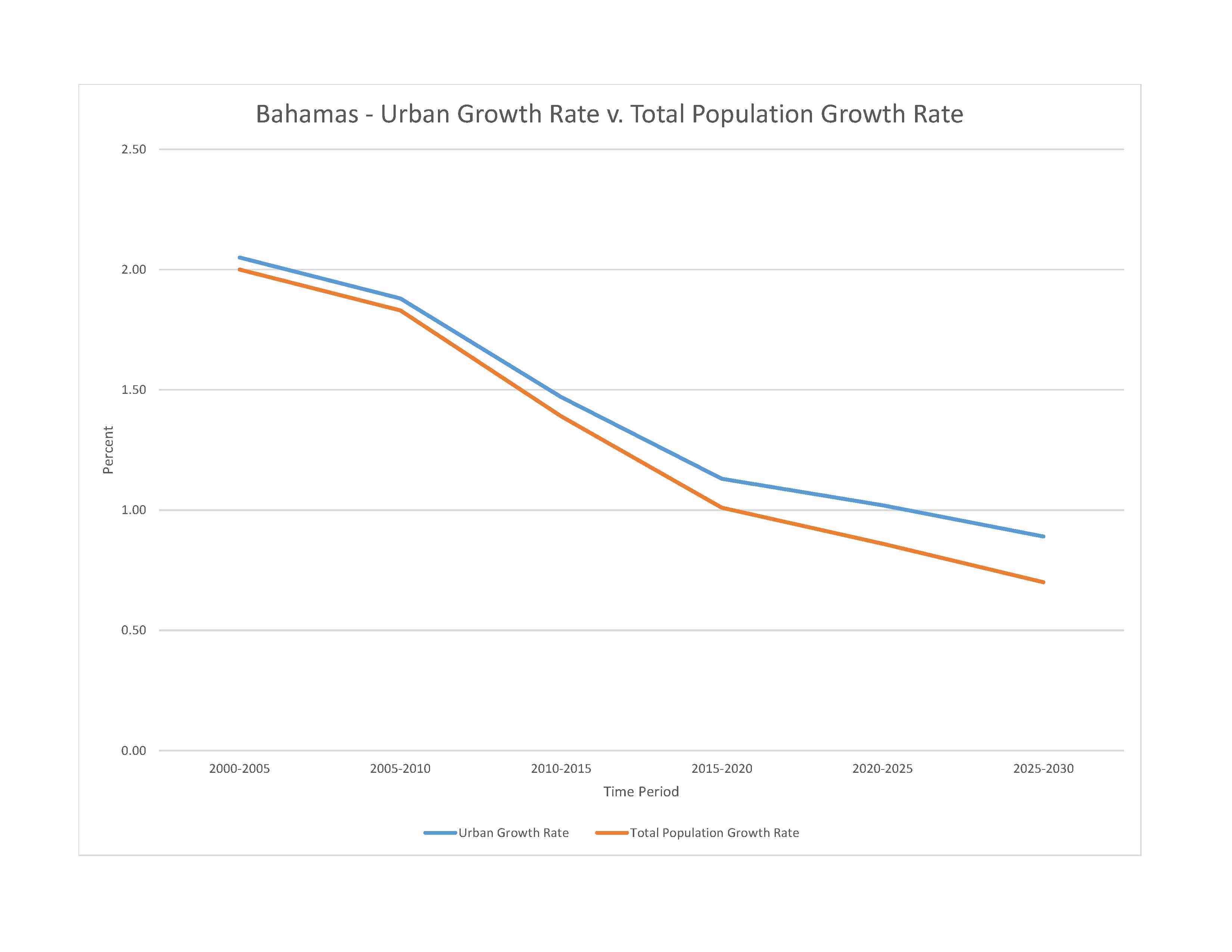
358,508 (2023 est.)
noun: Bahamian(s)
adjective: Bahamian
African descent 90.6%, White 4.7%, mixed 2.1%, other 1.9%, unspecified 0.7% (2010 est.)
note: data represent population by racial group
English (official), Creole (among Haitian immigrants)
Protestant 69.9% (includes Baptist 34.9%, Anglican 13.7%, Pentecostal 8.9% Seventh Day Adventist 4.4%, Methodist 3.6%, Church of God 1.9%, Plymouth Brethren 1.6%, other Protestant 0.9%), Roman Catholic 12%, other Christian 13% (includes Jehovah's Witness 1.1%), other 0.6%, none 1.9%, unspecified 2.6% (2010 est.)
0-14 years: 21.37% (male 38,851/female 37,765)
15-64 years: 68.8% (male 122,134/female 124,530)
65 years and over: 9.83% (2023 est.) (male 13,922/female 21,306)
total dependency ratio: 39.3
youth dependency ratio: 27.3
elderly dependency ratio: 11.9
potential support ratio: 8.4 (2021 est.)
total: 30.2 years (2023 est.)
male: 30.2 years
female: 30.2 years
1.06% (2023 est.)
13.1 births/1,000 population (2023 est.)
5.7 deaths/1,000 population (2023 est.)
3.2 migrant(s)/1,000 population (2023 est.)
most of the population lives in urban areas, with two-thirds living on New Providence Island where Nassau is located
urban population: 83.6% of total population (2023)
rate of urbanization: 1.02% annual rate of change (2020-25 est.)

280,000 NASSAU (capital) (2018)
at birth: 1.03 male(s)/female
0-14 years: 1.03 male(s)/female
15-64 years: 0.98 male(s)/female
65 years and over: 0.65 male(s)/female
total population: 0.86 male(s)/female (2023 est.)
77 deaths/100,000 live births (2020 est.)
total: 9.6 deaths/1,000 live births (2023 est.)
male: 10.7 deaths/1,000 live births
female: 8.4 deaths/1,000 live births
total population: 76.2 years (2023 est.)
male: 74.5 years
female: 77.9 years
1.44 children born/woman (2023 est.)
0.71 (2023 est.)
improved: total: 98.9% of population
unimproved: total: 1.1% of population (2017 est.)
7.6% of GDP (2020)
1.94 physicians/1,000 population (2017)
3 beds/1,000 population (2017)
improved: total: 98.2% of population
unimproved: total: 1.8% of population (2017 est.)
31.6% (2016)
total: 9.48 liters of pure alcohol (2019 est.)
beer: 3.66 liters of pure alcohol (2019 est.)
wine: 1.43 liters of pure alcohol (2019 est.)
spirits: 4.08 liters of pure alcohol (2019 est.)
other alcohols: 0.31 liters of pure alcohol (2019 est.)
total: 10.6% (2020 est.)
male: 18.8% (2020 est.)
female: 2.4% (2020 est.)
N/A
38.9% (2023 est.)
2.8% of GDP (2021 est.)
total population: NA
male: NA
female: NA
NOTE: The information regarding Bahamas The on this page is re-published from the 2024 World Fact Book of the United States Central Intelligence Agency and other sources. No claims are made regarding the accuracy of Bahamas The 2024 information contained here. All suggestions for corrections of any errors about Bahamas The 2024 should be addressed to the CIA or the source cited on each page.
This page was last modified 04 May 24, Copyright © 2024 ITA all rights reserved.